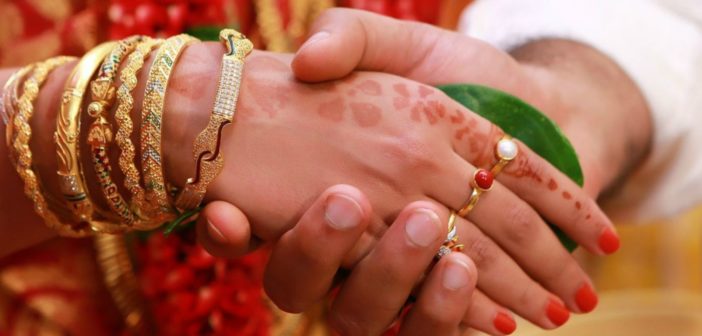Recently, the Ministry of Statistics and Programme Implementation (MoSPI) released the 26th edition of “Women and Men in India 2024: Selected Indicators and Data”. The report presents gender-disaggregated data across key sectors such as health, education, employment, and decision-making. According to the NFHS 2019–21 survey, at the national level, 23.3% of women aged 20–24 reported being married before the legal age of 18.
Recently, the Ministry of Statistics and Programme Implementation (MoSPI) released the 26th edition of “Women and Men in India 2024: Selected Indicators and Data“. The report presents gender-disaggregated data across key sectors such as health, education, employment, and decision-making. It draws from official sources to provide a detailed picture of gender disparities and progress, serving as a vital resource for evidence-based, gender-sensitive policymaking.
In this story, we examine key indicators of women’s status and well-being, including the prevalence of child marriage, prevalence of domestic or spousal violence, and the extent of property or asset ownership among women. The data for these parameters is drawn from the National Family Health Survey (NFHS) 2019–21 and has been published in the Women and Men in India report.
1 in 4 women reported they were married before attaining the legal age
According to the NFHS 2019–21 survey, at the national level, 23.3% of women aged 20–24 reported being married before the legal age of 18. In simpler terms, nearly 1 in 4 women aged 20–24 were married before reaching the age of 18. This figure was 26.8% in 2015-16. Despite laws aimed at preventing child marriage, this continued prevalence highlights the gap between legislation and the realities on the ground.
At the state level, certain states have seen an increase in the prevalence of child marriage. Assam, Manipur, Tripura, and Punjab reported rising figures between the two surveys. Notably, Tripura saw a 7% increase. However, many states have demonstrated significant reductions in child marriage. For example, Chhattisgarh experienced a notable decrease of 9.2%, from 21.3% in 2015-16 to 12.1% in 2019-21. Similarly, Madhya Pradesh, Nagaland, and Rajasthan have made considerable strides in reducing child marriage.
Despite overall progress, some states still report alarmingly high levels of child marriage. Bihar, West Bengal, and Tripura continue to report rates exceeding 40%, with Jharkhand and Assam also reporting more than 30%. On a positive note, states such as Kerala, Himachal Pradesh, Delhi, and Goa reported low prevalence rates, with less than 10% of women reporting child marriage. States like Sikkim, Chhattisgarh, Haryana, and Tamil Nadu also reported rates lower than 15%.
1 in 3 women reported that they experienced spousal violence including emotional, physical and sexual violence
Another important parameter covered in the report is the percentage of ever-married women aged 18–49 years who have experienced emotional, physical, or sexual violence committed by their husbands. This measure highlights the prevalence of domestic violence within marriages, offering insight into the safety and well-being of women.
At the national level, the percentage of women who have experienced spousal violence, including emotional, slightly declined from 33.3% in 2015-16 to 31.9% in 2019-21, showing a 1.4% decrease. While this represents a small improvement, the overall prevalence remains concerning, with nearly 1 in 3 women still reporting such experiences.
48.4% women in Karnataka reported spousal violence in 2019-21, up from 24.4% in 2015-16
State-wise, the prevalence of domestic violence varies significantly, with some regions showing notable improvements, while others continue to report high levels. Chandigarh saw a sharp reduction, with this figure dropping from 22.5% in 2015-16 to 11.8% in 2019-21, a decrease of 10.7%. Similarly, Chhattisgarh and Andhra Pradesh experienced significant declines of 17.1% and 11.8%, respectively. Haryana, Manipur, and Meghalaya are some other states with a decline in share.
In contrast, Karnataka recorded a significant rise, with the figure increasing from 24.4% to 48.4%, marking a 24 % rise, the highest recorded increase. Sikkim also saw a significant rise of 17.8%, from 3.5% to 21.3%. Other states, such as Assam, Madhya Pradesh, and Uttarakhand, saw more modest increases, indicating that domestic violence remains a persistent issue in these regions.
Some states, such as Kerala, Punjab and Goa, reported comparatively low levels of violence, with less than 10% of the women reporting such experiences. However, states like Bihar, Uttar Pradesh, Tamil Nadu, and Telangana continue to report high rates of spousal violence, with figures hovering around 40%.
4 out of ten women own a house, compared to 6 out of ten men.
Asset ownership is an important parameter because it reflects women’s economic empowerment, security, and autonomy. On asset ownership, the NFHS data reveals that 42.3% of women own a house alone or jointly, while 31.7% own land alone or jointly. In contrast, 60.1% of men own a house alone or jointly, and 42.3% own land alone or jointly. This disparity highlights the persistent gender gap in property ownership across the country.
In the northeastern region, Arunachal Pradesh and Meghalaya report some of the highest levels of women’s ownership. In Arunachal Pradesh, 68.7% of women own a house and 62.8% own land. Meghalaya also shows high ownership at 64.1% for houses and 44.6% for land. Sikkim and Manipur also report relatively strong figures, while Mizoram and Tripura show lower ownership among women.
Southern states like Karnataka and Telangana report high asset ownership among women. In Karnataka, 66.2% of women own a house and 53.7% own land. Telangana shows 63.6% ownership for houses and 42.6% for land. In contrast, Kerala reports relatively low figures, with 24.5% house ownership and just 11.5% land ownership.
Eastern India presents a mixed trend. Jharkhand stands out with 63.6% of women owning houses and 54.6% owning land. Odisha shows moderate ownership, while West Bengal reports among the lowest, with only 22% of women owning a house and 16.7% owning land.
Central India shows moderate outcomes. Chhattisgarh records 45.1% of women owning houses and 38.8% owning land, while Madhya Pradesh lags slightly behind.
In northern India, Punjab reports high house ownership among women at 63.2%, but only 27.1% own land. Uttar Pradesh shows relatively better outcomes with 51.2% house ownership and 42.7% land ownership. Haryana and Rajasthan report moderate to low ownership levels.
Western India reports some of the lowest ownership rates among women. Maharashtra has 21.5% of women owning houses and 14.7% owning land, while Goa reports 22.8% for houses and just 9.2% for land, which is among the lowest in the country. Gujarat fares better with moderate ownership levels.
Despite progress, India still has a long way to go in achieving gender equality
These indicators covered in the story offer important insights into gender equality and the socio-economic conditions of women across the country. The data highlights both progress and persistent challenges in gender equality across the country. While there have been improvements in areas like reducing child marriage and spousal violence in certain regions, significant disparities remain, particularly in child marriage prevalence and property ownership. Women’s asset ownership, especially in terms of land, remains much lower than men’s. Regional disparities are also evident, with some states showing remarkable progress, while others lag behind.



